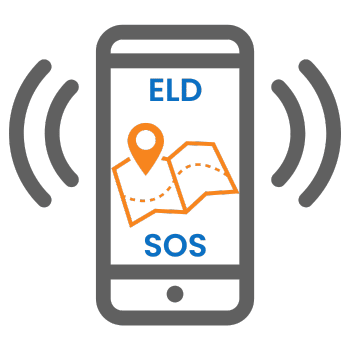Safety in the construction industry is paramount. With numerous heavy machinery, vehicles, and personnel involved, the risk of accidents is significant. According to the Occupational Safety and Health Administration (OSHA), one in five worker deaths in the U.S. are in construction. This statistic underscores the urgent need for enhanced safety measures in the industry. One of the most effective ways to improve safety is through the implementation of fleet management software. This technology not only ensures the efficient operation of construction fleets but also plays a crucial role in enhancing safety standards.


Understanding Fleet Management Software
Fleet management software is a comprehensive solution designed to help companies manage their fleet of vehicles and equipment efficiently. It encompasses various features, including GPS tracking, maintenance scheduling, driver behavior monitoring, and real-time reporting. For the construction industry, where the stakes are high, such software provides an invaluable tool to mitigate risks and enhance safety.
Challenges regarding Safety in the Construction Industry
Before delving into how fleet management software can enhance safety, it’s essential to understand the specific safety challenges faced by the construction industry:
- Heavy Equipment Accidents: Construction sites are replete with heavy machinery such as cranes, bulldozers, and excavators. Accidents involving these machines can be fatal.
- Vehicle Collisions: Construction sites often have a mix of vehicles and personnel, increasing the risk of collisions.
- Poor Maintenance: Neglecting the maintenance of construction vehicles and machinery can lead to malfunctions and accidents.
- Driver Fatigue and Behavior: Long hours and high-stress environments can lead to driver fatigue, significantly increasing the risk of accidents.


The Role of Fleet Management Software in Enhancing Safety
Fleet management software addresses these challenges through several key functionalities:
1. Real-Time GPS Tracking
Real-time GPS tracking is a cornerstone of fleet management software. It allows managers to monitor the exact location of their vehicles and equipment at all times. This feature enhances safety in several ways:
- Accident Response: In case of an accident, the exact location can be immediately identified, ensuring a swift response.
- Unauthorized Use: GPS tracking helps prevent unauthorized use of vehicles, reducing the risk of accidents caused by untrained operators.
- Route Optimization: By optimizing routes, fleet management software reduces the likelihood of collisions and ensures vehicles are not taking unnecessary risks.
2. Maintenance Scheduling
Proper maintenance of vehicles and machinery is crucial in preventing accidents. Fleet management software automates maintenance scheduling, ensuring that all equipment is serviced regularly and is in optimal working condition.
- Preventive Maintenance: Regular maintenance checks can identify potential issues before they become serious problems. This proactive approach significantly reduces the risk of malfunctions that could lead to accidents.
- Compliance: Maintenance schedules ensure that all equipment complies with safety regulations and standards, avoiding legal issues and enhancing overall safety.
3. Driver Behavior Monitoring
Monitoring driver behavior is essential in ensuring the safety of construction fleets. Fleet management software provides detailed insights into how vehicles are being operated.
- Speed Monitoring: By tracking vehicle speeds, managers can ensure that drivers adhere to safe speed limits, reducing the risk of accidents.
- Harsh Braking and Acceleration: Identifying patterns of harsh braking or acceleration can indicate reckless driving. Addressing these behaviors through training and corrective measures can enhance safety.
- Fatigue Management: Fleet management software can monitor driving hours and rest periods, helping to prevent fatigue-related accidents.
4. Real-Time Reporting and Alerts
One of the most powerful features of fleet management software is its ability to provide real-time reporting and alerts. This functionality ensures that any safety issues are immediately identified and addressed.
- Instant Alerts: In case of any anomalies such as unexpected stops, route deviations, or maintenance alerts, managers receive instant notifications. This allows for prompt action to mitigate risks.
- Comprehensive Reports: Detailed reports on vehicle performance, driver behavior, and maintenance schedules provide a comprehensive overview of the fleet’s safety status. These reports can be used to identify trends, plan training programs, and make informed decisions to enhance safety.
5. Training and Compliance
Fleet management software not only helps in monitoring and managing fleets but also plays a crucial role in training and compliance.
- Driver Training Programs: Insights from the software can be used to design targeted training programs to address specific safety concerns. For instance, if speeding is a common issue, a training program focusing on safe driving speeds can be implemented.
- Regulatory Compliance: Ensuring compliance with safety regulations is critical in the construction industry. Fleet management software helps keep track of compliance requirements and ensures that all vehicles and operators meet the necessary standards.
Evidence and Statistics
The impact of fleet management software on safety is supported by various studies and statistics:
- Reduction in Accidents: According to a study by the Federal Motor Carrier Safety Administration (FMCSA), the use of fleet management systems has been associated with a reduction in crashes by up to 20%.
- Maintenance-Related Safety: A report by Frost & Sullivan indicates that predictive maintenance facilitated by fleet management software can reduce vehicle downtime by 15% and maintenance costs by 10%, directly contributing to enhanced safety.
- Driver Behavior: The National Highway Traffic Safety Administration (NHTSA) reports that monitoring driver behavior can lead to a 22% reduction in unsafe driving incidents.
Case Study: Enhancing Safety with Fleetistics
One real-world example of the effectiveness of fleet management software in enhancing safety is the experience of a construction company using Fleetistics’ solutions. The company faced significant safety challenges, including frequent vehicle accidents and maintenance issues. After implementing Fleetistics’ fleet management software, they observed remarkable improvements:
- Accident Reduction: The number of vehicle accidents decreased by 25% within the first year.
- Improved Maintenance: The automated maintenance scheduling feature reduced breakdowns by 30%, ensuring that all vehicles and machinery were in safe working condition.
- Better Driver Behavior: The company saw a 20% reduction in incidents of speeding and harsh braking, thanks to driver behavior monitoring and targeted training programs.
Conclusion
In the high-risk environment of the construction industry, ensuring the safety of workers and equipment is crucial. Fleet management software offers a comprehensive solution to enhance safety through real-time GPS tracking, automated maintenance scheduling, driver behavior monitoring, and real-time reporting.
Supported by data and real-world evidence, it’s clear that fleet management software is an indispensable tool for construction companies committed to safety. By leveraging this technology, companies can not only protect their workforce but also improve operational efficiency and compliance, ultimately contributing to a safer and more productive construction industry.
Get industry tips and insights
Sign up for monthly news and tips from our award-winning fleet management blog. You can unsubscribe at any time.










